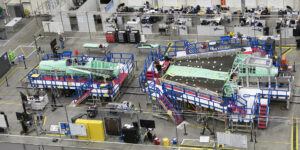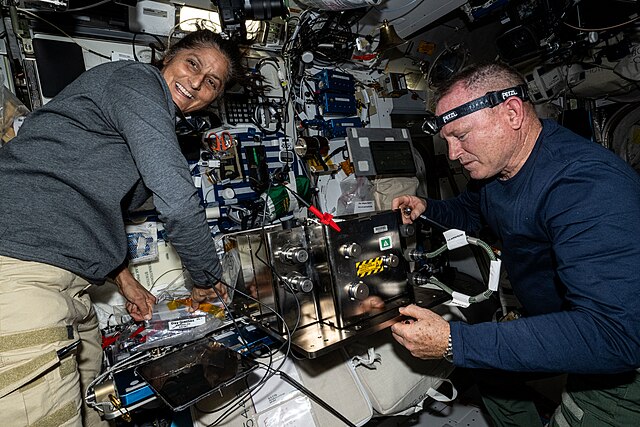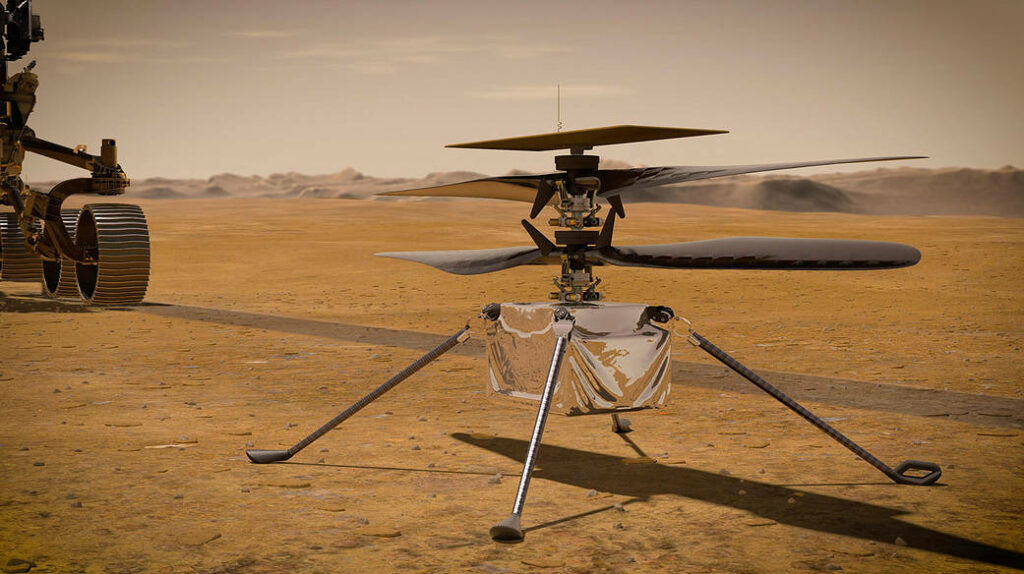NASA is on a mission to revolutionize supersonic air travel for passengers across the globe, with NASA’s first large scale, piloted X-plane in more than three decades.
NASA.GOV | J.D. Harrington
UPDATE: X-59 Construction Reaches Halfway Point

In this image, you’ll see a halfway built, single-piloted X-59 Quiet SuperSonic Technology (QueSST) aircraft, which will be used to provide rule-makers the data needed to enable a new commercial market for faster-than-sound air travel overland. The aircraft’s uniquely crafted parts help ensure it will reduce a disruptive sonic boom to a quiet sonic thump to people on the ground when flying. The X-59 team at Lockheed Martin in Palmdale, California, recently closed the aircraft’s structural backbone (the wing section). While simultaneously working on the plane’s forebody and empennage. The forebody section of the aircraft will carry the pilot and the avionics needed to fly the aircraft. The empennage supports the engine and other flight systems. The team will soon merge all three sections and gear up for the final assembly in 2021. The X-59 will undergo numerous tests to ensure the structural integrity of the aircraft and that its components work properly. The aircraft’s first flight will be in 2022, and community testing to understand the public’s perception of the X-59’s sound will begin in 2024.
Image Credit: Lockheed Martin
NASA is on a mission to revolutionize supersonic air travel for passengers across the globe, with NASA’s first large-scale, piloted X-plane in more than three decades.
The management review, known as Key Decision Point-D (KDP-D), was the last programmatic hurdle for the X-59 Quiet SuperSonic Technology (QueSST) aircraft to clear before officials meet again in late 2020 to approve the airplane’s first flight in 2021.
“With the completion of KDP-D we’ve shown the project is on schedule, it’s well planned and on track. We have everything in place to continue this historic research mission for the nation’s air-traveling public,” said Bob Pearce, NASA’s associate administrator for Aeronautics.
The X-59 is shaped to reduce the volume of a sonic boom reaching the ground to a gentle thump. It will fly above select U.S. communities to generate data from sensors and people on the ground to gauge public perception. That data will help regulators establish new rules to enable commercial supersonic air travel overland.
Construction of the X-59, under a $247.5 million cost-plus-incentive-fee contract, is continuing at Lockheed Martin Aeronautics Company’s Skunk Works factory in Palmdale, California. Three major work areas are set up for building the airplane’s main fuselage, wing, and empennage. Final assembly and integration of the airplane’s systems – including an innovative cockpit eXternal Visibility System – is targeted for late 2020.
Management of the X-59 QueSST development and construction falls under the Low Boom Flight Demonstrator project, part of NASA’s Integrated Aviation Systems Program.
For more information about NASA’s aeronautics research, visit:




